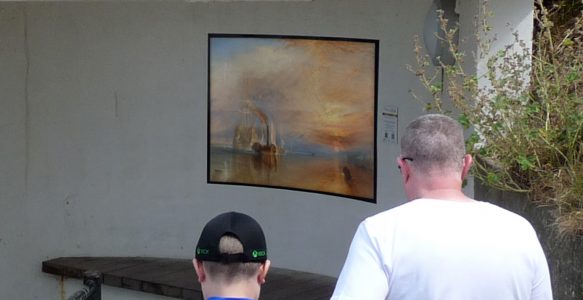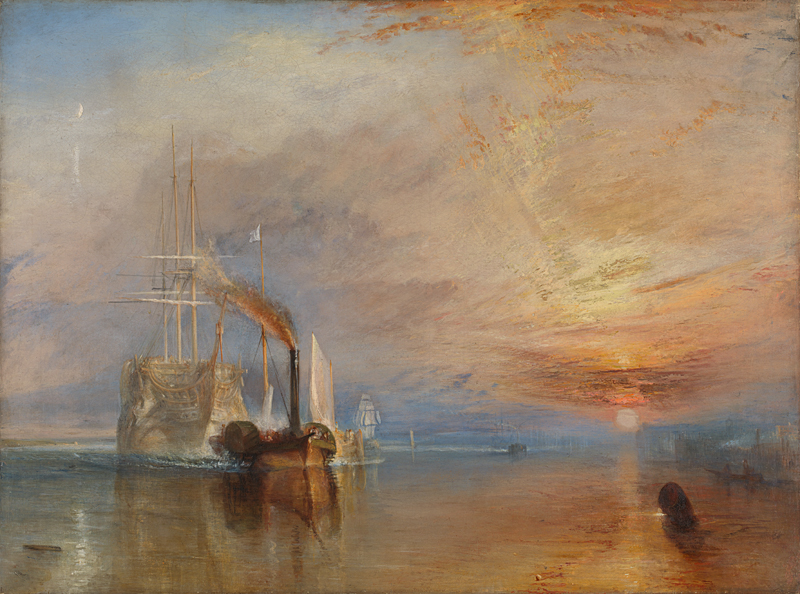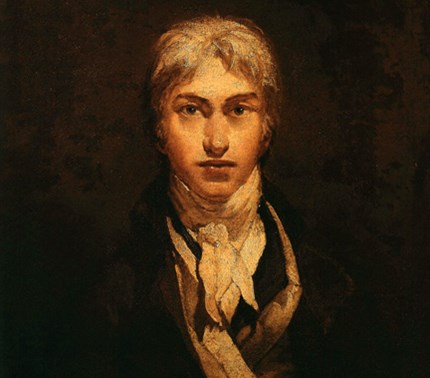The Fighting Temeraire can be found on the western most zigzag slope
The Fighting Temeraire tugged to her last berth to be broken up, 1838
Joseph Mallord William Turner
Oil on canvas 90.7 × 121.6 cm
Turner’s painting shows the final journey of the Temeraire, as the ship is towed from Sheerness in Kent along the river Thames to Rotherhithe in south-east London, where it was to be scrapped. The veteran warship had played a distinguished role in the Battle of Trafalgar in 1805, but by 1838 was over 40 years old and had been sold off by the Admiralty. When exhibited at the Royal Academy in 1839, the painting was accompanied by lines Turner had adapted from Thomas Campbell’s poem, Ye Mariners of England: ‘The flag which braved the battle and the breeze, / No longer owns her.’
Read more at National Gallery.org.uk
And in depth at nationalgallery.org.uk/…the-fighting-temeraire
Joseph Mallord William Turner
Turner is perhaps the best-loved English Romantic artist. He became known as ‘the painter of light’, because of his increasing interest in brilliant colours as the main constituent in his landscapes and seascapes. His works include water colours, oils and engravings.
Turner was born near Covent Garden in London and entered the Royal Academy Schools in 1789. His earliest works form part of the 18th-century topographical tradition.
Read more ay NationalGallery.org.uk




